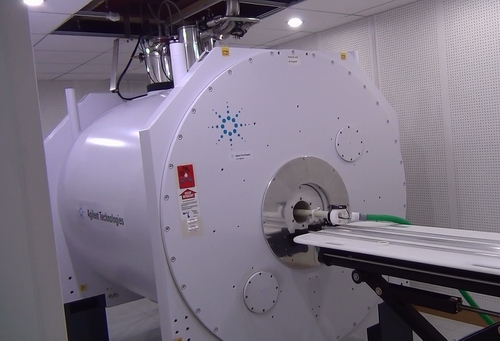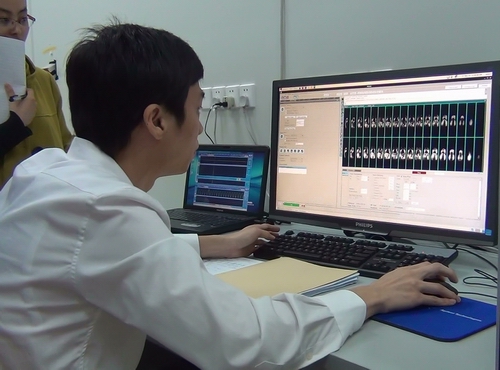Jun 20,2013|By
Equipped with state-of-art hardware for high field MRI research, the first 9.4 Tesla 40cm bore Magnetic Resonance Imaging (MRI) system in the Asia-pacific rim, dedicated for large mammalian MRI research, is installed at the High Magnetic Field Laboratory, Chinese academy of sciences (CHMFL).
The animal facility, integrated around the 9.4 T system, was also constructed and completed at the same time. It provides a unique MRI-animal research platform, allowing scientists to conduct door-to-door experiments under a unified environment with high purity. This is the first MRI facility that could provide specific pathogen free (SPF) standard research environment for animal studies in China.
Together with the 9.4T MRI scanner, sensitive animal models such as transgenic mice could be systematically investigated to reveal the subtle difference in their pathology or physiology, minimizing the hazardous environmental factors that would otherwise comprise the outcome of the studies. Besides rodent species, the 9.4 T facility would also allow the study of large mammalian such as cats or rhesus monkeys. High resolution MR structural imaging will be carried out with those animals as well as functional MRI and molecular MRI studies, with specific focus on neuroscience and clinical applications.
The biomedical MRI research at CHMFL plays an important role in clinical medicine and life science research. The 9.4 T program belongs to part of the Chinese National Large-scale Scientific Projects. It is an open platform that will accommodate scientists both within and outside China with an emphasis on bio-imaging, cognitive neuroscience and clinical medicine.

The High Magnetic Field MRI in Opertion (photo by FP)

The image analysis in the lab. of CHMFL on 10 May, 2013 (photo by FP)
Attachments Download: